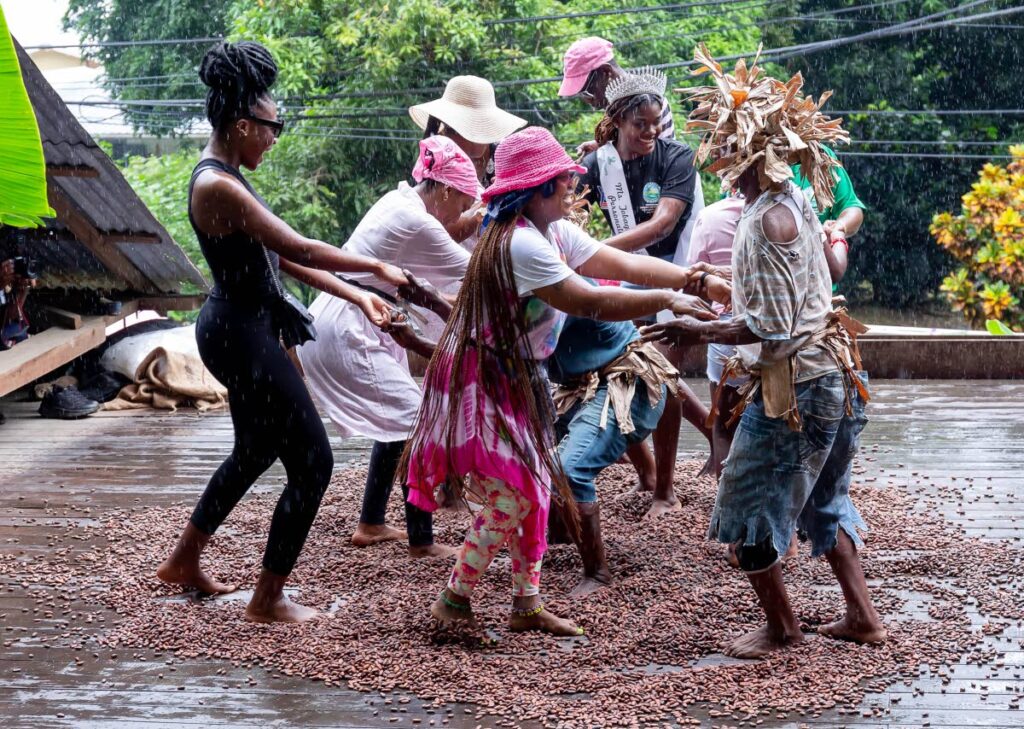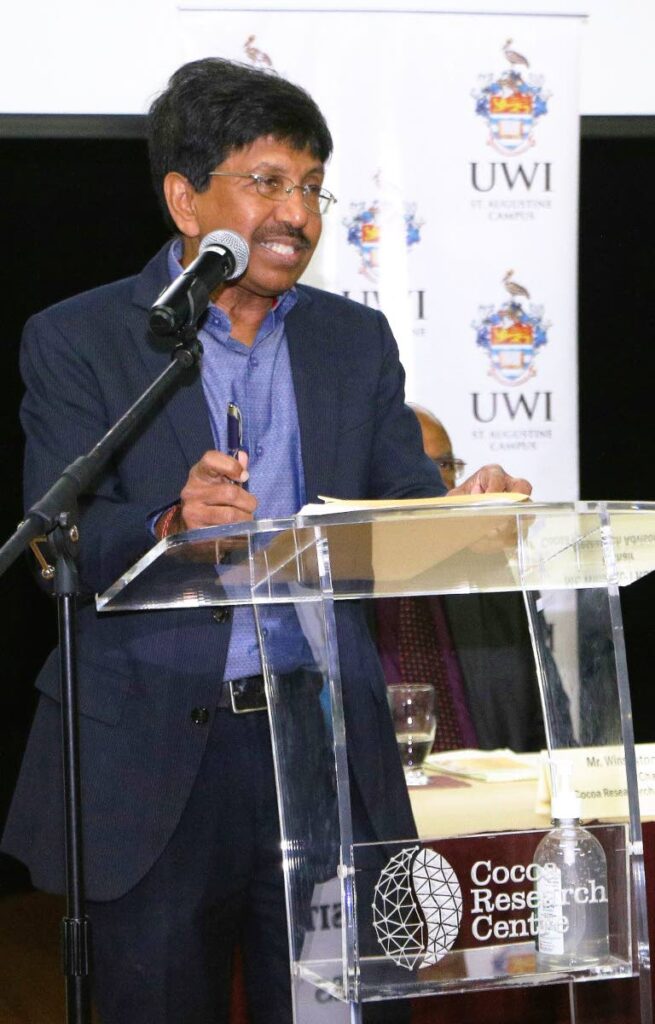Looming shortages threaten: cocoa needs urgent revival

Trinidad and Tobago has been internationally recognised for its cocoa and has won eight international cocoa awards since the inception of the Cocoa Excellence Programme in 2009. TT was famous for its cocoa quality over 100 years ago, but attempts of recent years to revitalise the industry are flagging.
Prof Pathmanathan Umaharan, director of UWI's Cocoa Research Centre, who is also advocating for the revitalising of the cocoa industry, has also discussed making chocolates locally for export – but the remaining cocoa farmers need much more to make the industry what it was over 100 years ago.
President of the Lopinot Cocoa Farmers Joseph Ronnie Garcia said more awareness and encouragement is needed to get people on board with making cocoa a source of foreign income and get them working on the estates.
"Cocoa is a very manual thing – a lot of manual labour is needed – and then people were not going outside to do that. It was and is still hard to get people to do it.
"I do my own thing and go in the estate when I can, but a lot of people grow the cocoa trees and cut it to get short crops."
He added that the amount of cocoa a farmer would usually get before 2020 is no longer what it used to be.

(File photo) - ROGER JACOB
"What I normally pick, I will get an average of over 100 kilograms (kgs) wet – before the fermenting and drying process – and what I got this year... if I got 40 kgs, I got plenty. So less than half the usual amount."
He said this is owing to unpredictable weather patterns and lack of labour.
Garcia added that payments to farmers from chocolate-makers were also a problem, leading to many people leaving the industry or hesitant to join.
"It's only now the chocolatiers paying a little change, because there is actually no cocoa. The chocolatiers only wanted to pay farmers $20-$25 per kg and the farmers really had to work hard.
"Production is picking the cocoa, heaping it up in one area, crack them, take the cocoa from the pods, clean it, put it in the sweat box to sweat for six-seven days – which you have to turn every two days – then it has to dry, which takes another week. So it takes two weeks to get the get the cocoa to make products, but they only want to give farmers $25 per kg."
This year, however, farmers got $40-$60 per kg because of the shortage, he said.
Garcia added that this is one of the many reasons people prefer to work small jobs instead of getting into cocoa farming, but being a retired man, this is one of the ways he keeps active.
His hopes for the upcoming cocoa season – November-July – is a stable weather pattern suitable for boosting cocoa production.
Arthur Cooper, cocoa farmer and owner of a cocoa estate in the Las Lapas Heights, Lopinot, also shared his insights into the cocoa shortage, saying it was because there were many abandoned and inaccessible cocoa and coffee estates. When he raised these concerns with a former agriculture minister, Cooper's pleas fell on deaf ears.
He echoed Garcia's comments on the lack of labour, reiterating that it is a problem that reduces production, along with another problem plaguing estates – animals. He said monkeys, parrots, woodpeckers and squirrels are also affecting cocoa production.

"For three years now, I have only been getting a little handful of cocoa, but certain areas might."
Cooper's relative, who also owns a cocoa farm in Venezuela, is faced with the same issue of cocoa shortage.
Asked what he thinks is needed to bring back the industry, he said, "There are plenty abandoned estates, but labour is the biggest problem to solve."
As for machinery, Cooper said it would be hard to incorporate, since the cocoa farms in the northern range are hilly, and the only tool he sees helping in the harvesting process is a brush cutter.
Cooper added that training is also vital as people may not know which cocoa to pick and how to check the quality of the beans before even cracking the pod open.
"I was teaching, but some did not want to learn. Training is important, especially when it comes to pruning the tree: people have to know how to do that. If training had continued and the government had put more money in the industry, it would have been better than where it is now."
Asked if he believes the Ministry of Agriculture, Land and Fisheries and the Food and Agriculture Organisation of the UN's One Country One Product will bring TT's global cocoa production scale to 23 per cent from 20 per cent in 1920, he said no.

He explained that from what he has seen recently, with people backing out of the labour-intensive process, he doesn't see it getting better in the years to come.
"The ministry will have to select some of the young people, who are interested in it, and train them – training on the field is necessary for that industry."
While there are drawings and explanations to teach people the process, learning first-hand in the field is much more effective, Cooper explained.
Chairman of the North Ridge Cocoa and Coffee Co-operative Winston Maraj added, "In my view, the resources of the State or what's available at the Ministry of Agriculture should come directly to the cocoa enterprises themselves – farmers, processors, manufacturers. Instead of going to consultants, the money needs to be at the level of the producer."
To allow TT to rely on cocoa as a source of income through exports, Maraj reiterated what Garcia and Cooper said: revitalise abandoned cocoa farms and estates and make them more productive.
Maraj added that for the year so far, the company has harvested less than 100 kgs compared to 2019 when he would get 300-400 kgs of cocoa.
Asked what he thinks is needed for the industry to thrive again, he said, "For the farmers, we need to change the idea of it being called a cocoa estate or cocoa space, because there are other streams of income needed, through rearing bees or even producing other crops."

President of the Lopinot Tourism Association Donna Mora said the shortage is affecting her business, as she is unable to offer the wide variety of products – cocoa wine, cocoa balls, cocoa powder and soaps – and the well-anticipated dancing the cocoa, which allows air to flow through the beans so they dry evenly. People come to the tours by the association to see and experience this cocoa dance.
Mora said, "We hope this doesn't turn into a crisis, because if the shortage continues, we will have to totally shut down the chocolate factory section of our tours."
She said the chocolate factory alone generates 75 per cent of the association's income through these tours.

Comments
"Looming shortages threaten: cocoa needs urgent revival"